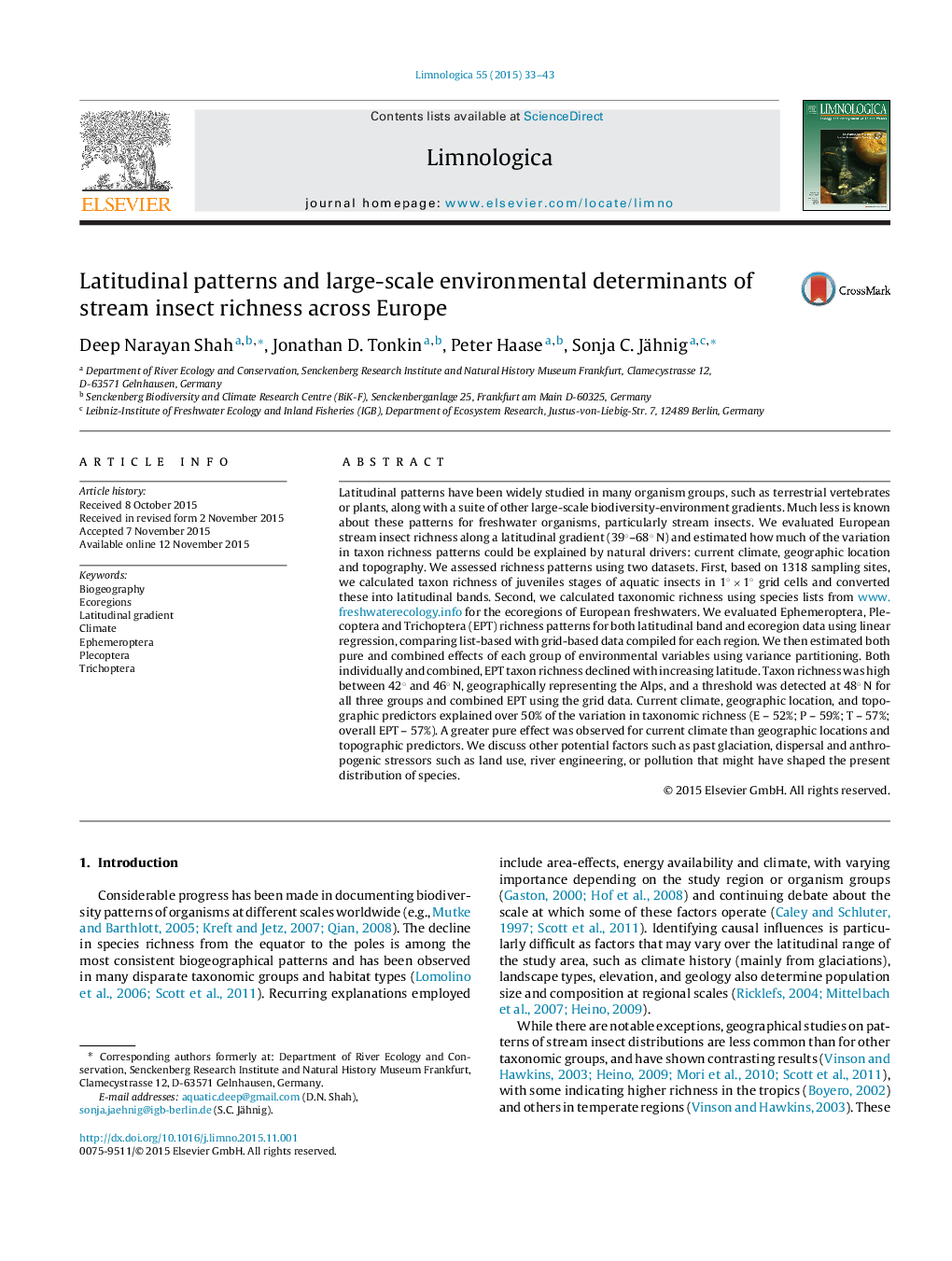| کد مقاله | کد نشریه | سال انتشار | مقاله انگلیسی | نسخه تمام متن |
|---|---|---|---|---|
| 4400350 | 1618567 | 2015 | 11 صفحه PDF | دانلود رایگان |
Latitudinal patterns have been widely studied in many organism groups, such as terrestrial vertebrates or plants, along with a suite of other large-scale biodiversity-environment gradients. Much less is known about these patterns for freshwater organisms, particularly stream insects. We evaluated European stream insect richness along a latitudinal gradient (39°–68° N) and estimated how much of the variation in taxon richness patterns could be explained by natural drivers: current climate, geographic location and topography. We assessed richness patterns using two datasets. First, based on 1318 sampling sites, we calculated taxon richness of juveniles stages of aquatic insects in 1° × 1° grid cells and converted these into latitudinal bands. Second, we calculated taxonomic richness using species lists from www.freshwaterecology.info for the ecoregions of European freshwaters. We evaluated Ephemeroptera, Plecoptera and Trichoptera (EPT) richness patterns for both latitudinal band and ecoregion data using linear regression, comparing list-based with grid-based data compiled for each region. We then estimated both pure and combined effects of each group of environmental variables using variance partitioning. Both individually and combined, EPT taxon richness declined with increasing latitude. Taxon richness was high between 42° and 46° N, geographically representing the Alps, and a threshold was detected at 48° N for all three groups and combined EPT using the grid data. Current climate, geographic location, and topographic predictors explained over 50% of the variation in taxonomic richness (E – 52%; P – 59%; T – 57%; overall EPT – 57%). A greater pure effect was observed for current climate than geographic locations and topographic predictors. We discuss other potential factors such as past glaciation, dispersal and anthropogenic stressors such as land use, river engineering, or pollution that might have shaped the present distribution of species.
Journal: Limnologica - Ecology and Management of Inland Waters - Volume 55, November 2015, Pages 33–43
